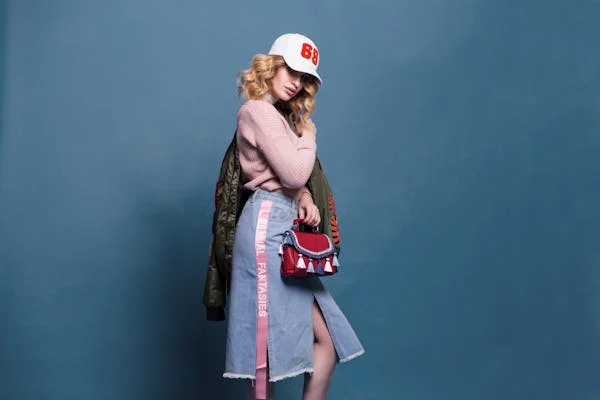H1: Sustainable Fashion Trends: Combining Style and Sustainability
In today’s world, where climate change and environmental concerns are at the forefront of global discussions, the fashion industry is undergoing a significant transformation. Sustainable fashion is no longer just a trend; it’s a movement that is reshaping the way we think about clothing. In this article, we’ll explore the key trends in sustainable fashion and how style and sustainability can be seamlessly combined to create a better future for both our wardrobes and the planet.
H2: Introduction to Sustainable Fashion
The idea of sustainable fashion isn’t just about being eco-friendly; it’s about making conscious decisions that benefit the environment, society, and the people who make our clothes. This includes using sustainable materials, supporting ethical practices, and designing garments with longevity in mind. But what does sustainable fashion really mean, and why should we care?
H3: What is Sustainable Fashion?
Sustainable fashion refers to a movement and process of thinking about clothing in a way that prioritizes the health of the planet, ethical production, and long-term use. It involves reducing waste, using eco-friendly materials, and ensuring fair wages and working conditions for those involved in the garment production process.
H3: Why Sustainable Fashion Matters
The fashion industry is one of the largest polluters in the world, contributing to environmental damage through overproduction, excessive water usage, and harmful chemical dyes. By adopting sustainable practices, the industry can reduce its environmental footprint and help conserve natural resources for future generations.
H2: Key Trends in Sustainable Fashion
As sustainable fashion continues to gain popularity, several trends are emerging that blend style with eco-conscious choices. Let’s dive into some of the key trends shaping the future of fashion.
H3: Eco-friendly Fabrics
One of the most noticeable trends in sustainable fashion is the shift towards eco-friendly fabrics. Designers and brands are opting for materials that have a smaller environmental impact.
H4: Organic Cotton and Hemp
Organic cotton, grown without the use of harmful pesticides or synthetic fertilizers, is one of the most popular eco-friendly fabrics. Similarly, hemp is gaining traction due to its low environmental impact and natural durability. These fabrics not only reduce the chemical load on the environment but also offer a comfortable and stylish alternative to conventional textiles.
H4: Recycled Materials
Recycling is a huge part of sustainable fashion. Brands are increasingly using recycled materials like polyester, nylon, and even ocean plastic to create new garments. By turning waste into wearables, they’re reducing the demand for virgin materials and helping tackle the global plastic crisis.
H3: Slow Fashion Movement
The slow fashion movement is about buying fewer, high-quality pieces that last longer, instead of constantly chasing trends that lead to overconsumption.
H4: Quality Over Quantity
Instead of buying cheap, fast-fashion items that wear out after a few uses, slow fashion emphasizes the importance of quality. Garments are made to last longer, which means fewer clothes end up in landfills. The focus is on craftsmanship, durability, and timelessness.
H4: Timeless Pieces vs. Fast Fashion
Timeless pieces—those that never go out of style—are the cornerstone of slow fashion. By investing in versatile, durable, and well-made garments, you can avoid falling into the trap of fast fashion, where items quickly lose their appeal and are replaced with new trends.
H3: Upcycling and Clothing Resale
Upcycling is an innovative way to turn old clothes into something new and valuable. By reworking outdated garments into fresh designs, you reduce waste and create unique pieces that no one else will have. Resale platforms are also booming, where pre-loved items are given a second life.
H3: Vegan and Cruelty-Free Fashion
As more people seek ethical fashion, the demand for vegan and cruelty-free clothing is on the rise. This includes everything from plant-based leather to wool alternatives. Vegan fashion eliminates the use of animal products, ensuring no harm is done to animals in the production process.
H3: Circular Fashion and Clothing Rental
Circular fashion is all about creating a closed-loop system where clothes are designed to be reused, repaired, or recycled. Clothing rental services, like Rent the Runway, allow consumers to rent outfits for special occasions, reducing the need to buy new clothes for every event.
H2: Combining Style and Sustainability
Many people assume that sustainable fashion means sacrificing style, but this is far from true. There are countless ways to incorporate eco-friendly choices into a chic wardrobe.
H3: The Balance Between Style and Eco-Friendliness
Finding the right balance between style and sustainability isn’t as difficult as it may seem. With the rise of eco-conscious brands, it’s easier than ever to buy stylish clothes that are also sustainable. Look for brands that prioritize both design and ethics, ensuring that your clothes are as good for the planet as they are for your wardrobe.

H3: How to Stay Stylish and Sustainable on a Budget
Sustainable fashion doesn’t always have to be expensive. Thrift shopping, swapping clothes with friends, and investing in high-quality basics are excellent ways to stay stylish without breaking the bank. Plus, the longer you keep a piece of clothing, the more cost-effective it becomes over time.
H2: How Sustainable Fashion Influences the Industry
Sustainable fashion isn’t just a trend; it’s an industry-wide revolution. Let’s take a look at how this movement is influencing both designers and consumers.
H3: Impact on Designers and Brands
Designers are increasingly embracing sustainability by using eco-friendly materials, reducing waste, and supporting fair labor practices. As consumer demand for sustainable fashion grows, many well-established brands are shifting towards greener practices, ensuring they stay relevant in a rapidly changing market.
H3: Consumer Demand and Shifting Priorities
Today’s consumers are more informed and discerning than ever before. With access to information at their fingertips, people are more likely to choose brands that align with their values, including those that prioritize sustainability.
H4: The Role of Social Media in Promoting Sustainability
Social media has played a huge role in promoting sustainable fashion. From influencers showcasing eco-friendly brands to campaigns pushing for more ethical practices, social platforms have given consumers the power to demand change.
H2: Conclusion: The Future of Fashion
The future of fashion lies in sustainability. As the industry continues to evolve, it’s clear that combining style and sustainability is not just a possibility—it’s an essential part of the future. With innovations in materials, production methods, and consumer behavior, sustainable fashion is poised to become the norm, not the exception.
H2: FAQs
1. What is sustainable fashion?
Sustainable fashion refers to clothing that is made in an eco-friendly way, using materials and processes that reduce harm to the environment. It also focuses on ethical practices, such as fair wages and good working conditions for garment workers.
2. How can I start buying sustainable fashion?
Start by looking for brands that use eco-friendly fabrics, support ethical practices, and focus on producing high-quality, timeless pieces. Thrift shopping and upcycling your clothes are also great ways to embrace sustainable fashion.
3. Is sustainable fashion more expensive?
Sustainable fashion can sometimes be more expensive upfront, but it’s a more cost-effective choice in the long run. High-quality, durable pieces last longer, reducing the need to constantly replace items.
4. Can sustainable fashion be stylish?
Absolutely! Many sustainable brands offer trendy, stylish clothes made from eco-friendly materials. Sustainable fashion is about finding the right balance between style, quality, and environmental impact.
5. How does sustainable fashion impact the environment?
Sustainable fashion helps reduce pollution, waste, and the use of harmful chemicals. By choosing eco-friendly materials and practices, it helps conserve resources and protect the planet.

